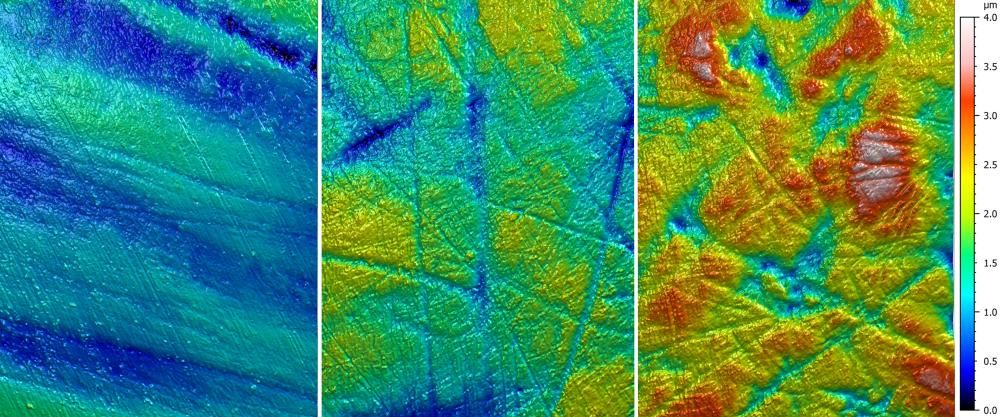Scientists examining the teeth of ancient pandas discovered at a fossil site in southern Germany have identified evidence that rewrites our understanding of their evolutionary history. Unlike modern pandas, these extinct bears were omnivorous.
Existing giant pandas are famous for their laziness and their fastidious diet of bamboo shoots, leaves and stems. In fact, they are the most herbivorous species in the whole Carnivora order (mammals that are specialized in primarily eating meat), despite having the digestive system of a carnivore.
This makes the eating habits of modern pandas quite peculiar, and scientists are still not sure when they developed this specialized niche, especially as their ancestors were significantly less fussy.
An international team from Hamburg, Frankfurt, Madrid, and Valencia recently discovered the fossilized remains of an extinct species of panda, Kretzoiarctos beatrix, at the Hammerschmiede site in Allgäu, Germany.
K. beatrix is the oldest known ancestor of modern giant pandas. They lived around 11 million years ago and were slightly smaller than today’s species. Despite this, the extinct panda was still a chunky animal, capable of weighing over 100 kilograms (220 pounds).
To date, most of their fossils have been found in Spain, suggesting that pandas originated in Europe and migrated to China at some point in the past. But unlike modern pandas, K. beatrix was actually an omnivore, eating both plants and meat.
The researchers compared the fossilized teeth of K. Beatrix with those of other bear species, including polar bears, brown bears, South American spectacled bears, and both modern giant pandas and their extinct ancestors.
They concluded that the bear from Hammerschmiede did not specialize in hard plants, unlike its modern ancestors, but it also didn’t eat meat exclusively, like polar bears. As such, K. beatrix had a diet that was much more like modern brown bears, containing both plant and animal matter.

The teeth from the upper jaw of K. beatrix showing the chewing surfaces marked in different colors.
“These results are important to our understanding of the evolution of bears and the development of herbivory in giant pandas. It turns out that Kretzoiarctos beatrix, the oldest of the pandas was a generalist. Specialization in the panda’s diet only came about late in its evolution,” Professor Madelaine Böhme from the Senckenberg Centre for Human Evolution and Palaeoenvironment at the University of Tübingen said in a statement.
The team made this assessment based on macro- and micromorphological analysis of the bear’s teeth. They found that, on the macro level, K. beatrix’s teeth were suitable for a wide variety of food types, but on the micro level they had scratches and pits on the surface indicating they had chewed harder materials, like bones. This suggests they enjoyed a broader diet.
Böhme and colleagues have published their results in two studies which were based on the dietary and life habits of 28 species of predators discovered at Hammerschmiede.

The comparative micromorphology of the chewing surfaces of modern pandas (on the left), K. beatrix (in the middle) and a modern brown bear (on the right).
A remarkable ecosystem
In 2019, the site became famous when the remains of an 11.5-million-year-old great ape, known as Danuvius guggenmosi, was uncovered. This ape from the Middle- to Late Miocene is said to be the first species to have adapted to walk upright.
During the most recent excavation, Böhme’s team found an incredible 166 fossilized species at the site.
“Such a flourishing ecosystem offers a wealth of ecological niches for the species that live in it,” said Böhme. “This meant they could adapt to the forested river landscape which was in the region at that time”.
Besides the ancient panda, the other predators found at Hammerschmiede ranged from tiny, weasel-like animals that weighed less than a kilogram, to large hyenas and saber-toothed tigers.
“Their respective primary sources of food were very varied: there were pure carnivores such as the saber-tooth tiger, fish-eaters like the otter, and bone-eaters such as the hyaena. A few other species like the panda and the marten fed opportunistically on plants and animals of various sizes,” Dr Nikolaos Kargopoulos added.
“The otter-like animals were good swimmers; bears, hyaenas, and others stayed on the land or lived in burrows like the skunks. A strikingly large number of species were tree-climbers like the marten, cat-like animals, genets and red pandas”.
The sheer diversity of this population is extremely rare in terms of fossils, but also today. There are very few modern habitats that can boast similar numbers of species. It also indicates that the ecosystem at Hammerschmiede was healthy if it could sustain such diversity. Even species that would typically compete within the same niche could thrive side by side.
“For example, there are four different otter-like animals of approximately the same size and type of diet,” said Böhme. “Normally, they would compete for the natural resources in their environment. But it seems that the resources of the Hammerschmiede were rich enough to meet the needs of every species.”
The studies are published in Geobios and Palaeontology.
Source Link: Newly Discovered Ancient Panda Fossil Shows They Once Lived In Europe And Ate Meat